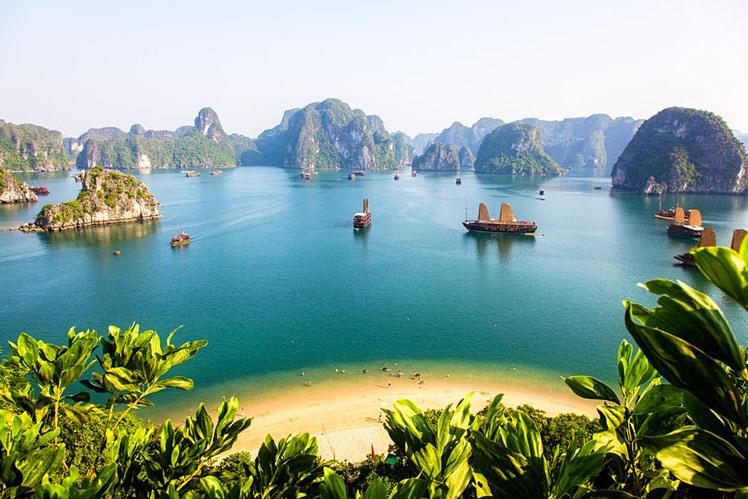
Do you need a visa to go to Vietnam?
TripFalcon March 30, 2021
Last Update: 2021-03-29 23:52:20While pottering around the wild landscapes and beautiful coastlines of Vietnam can bring a sense of inner peace, navigating the country’s visa requirements and regulations before a trip can be a real headache. To take some of the pain out of the planning process, here’s our guide to the entry requirements for Vietnam.
What you need to know about visas in Vietnam
Whether or not you require a visa for visiting Vietnam will depend on where you live and how long you are planning to visit for.
Residents from a number of countries have visa exemption status for tourist visits to Vietnam. These generally fall into two categories of either 30- or 15-days exemption. Nationals of neighbouring nations, including Thailand, Indonesia, Laos, Malaysia and Singapore, can stay for 30 days without a visa, while a number of European countries, including the UK, Denmark, Finland, France and Germany, as well as Russia and Japan, can travel visa-free for 15 days. The Philippines is the anomaly, which grants visa-free travel to Vietnam for 21 days. For a full list of up-to-date visa-exempt countries.
Anyone planning to visit Vietnam from outside these countries, or for longer than the allotted time period, will need to apply for a visa before travelling.
There are three ways to apply for a visa. The first is the traditional method of going to a Vietnamese embassy or consulate in your country of origin and filling out the application form, as well as providing photographs and your passport. You will be provided with your visa before departure.
The other two options, ‘visa on arrival’ and ‘e-visa’, have a similar process. Visa on arrival involves using an online agent to secure an approval letter, which is then shown – along with a valid passport – at the relevant immigration desk of any international airport in Vietnam. An additional ‘stamping fee’ is then paid to grant entry to the country. The ‘e-visa’ process is newer and more streamlined. You can apply for an e-visa through the government website, then, once approved, simply print it out and present it upon arrival in Vietnam. The additional benefit of the e-visa – alongside not having to queue at the ‘visa on arrival’ desk – is that it's valid at land borders, not just airports. Vietnam Visa Choice are among the professional outfits offering approval letters for visa on arrivals, while e-visas are available from the Vietnam Immigration website.
The conventional, single-visit, 30-day visas cost US$25 (prices can fluctuate when applying through embassies). For visa on arrival options, there will be an additional charge for securing the initial approval letter from the agency (usually around US$20). Longer, 90-day visas are also available to tourists, but these can only be applied for through an embassy or as a visa on arrival (e-visas are always 30 days maximum).
When applying for any visa, make sure your passport is valid for at least six months from your planned travel date to Vietnam. To fly on the side of caution, aim to submit photographs that are less than six months old.
Tourist visa extensions officially cost as little as US$10, and have to be organised via agents while in Vietnam. The procedure takes seven-to-ten days and you can only extend the visa for a month (US$40) or two months (US$60) depending on the visa you hold.
You can extend your visa in big cities, but if it's done in a different city from the one you arrived in (oh the joys of Vietnamese bureaucracy!), it'll cost you US$50 to US$70. In practice, extensions work most smoothly in HCMC, Hanoi, Danang and Hue.
It’s also worth noting travellers of any nationality can visit the Vietnamese island of Phu Quoc without a visa for up to 30 days, providing they fly in and out of the airport located on the island (Phu Quoc International Airport) and aren’t arriving from within Vietnam.

